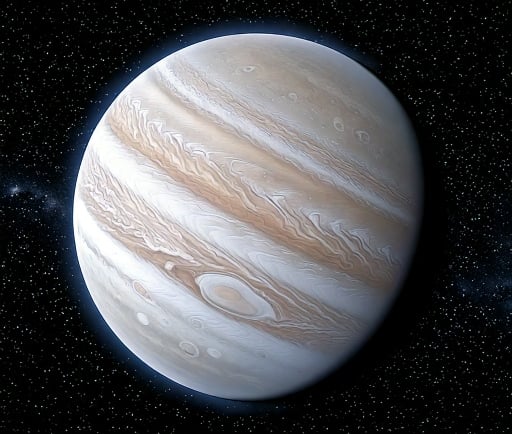Nu Ophiuchi b: A Remarkable Gas Giant Exoplanet


Introduction to Nu Ophiuchi b
Nu Ophiuchi b, an intriguing gas giant exoplanet, has garnered significant attention from astronomers and space enthusiasts alike. Orbiting a K-type star, this exoplanet exhibits fascinating and unique characteristics that distinguish it from other celestial bodies. With a colossal mass of approximately 22.206 times that of Jupiter, its gravitational dynamics raise numerous questions about the formation and evolution of planetary systems.
Orbital Characteristics
One of the most defining features of Nu Ophiuchi b is its orbital period of approximately 1.5 Earth years. This elliptical orbit around its parent star allows researchers to study the atmospheric and environmental conditions that prevail on this massive gas giant. With a relatively shorter orbital cycle in comparison to similar exoplanets, it presents a compelling case for examining how gas giants develop and whether they exhibit variability in atmospheric phenomena over shorter periods.
Scientific Significance
The study of Nu Ophiuchi b is crucial for enhancing our understanding of gas giants and their evolutionary trajectories. Gas giants are often found in a plethora of exoplanetary systems, and analyzing their mass and orbit can provide insights into their formation processes. By investigating the characteristics of Nu Ophiuchi b, scientists can draw parallels between this exoplanet and others in the cosmos, as well as refine models of planetary formation and migration.
Additionally, the star Nu Ophiuchi is classified as a K-type dwarf, which means it has a lower temperature and luminosity compared to the more common G-type stars like our Sun. The implications of this stellar classification extend to the study of habitability and the potential for life in surrounding systems. Understanding how gas giants like Nu Ophiuchi b interact with their host stars can shed light on the dynamics within these distant worlds.
Future Research and Observations
As advancements in technology continue to progress, the potential for further exploration of Nu Ophiuchi b cannot be overstated. Upcoming missions and enhanced observational techniques, such as the use of space telescopes, are expected to provide new insights into the atmosphere and composition of this gas giant. Researchers anticipate that by focusing on its atmospheric elements and potential weather patterns, they can gather data that is crucial for comparing with solar system gas giants.
In conclusion, Nu Ophiuchi b serves as a captivating subject for astronomers, offering a unique perspective on gas giants and their relationship with K-type stars. As we delve deeper into studying this fascinating exoplanet, we unlock the potential for discovering more about the vast universe in which we reside, fueling both scientific inquiry and our inherent curiosity about the cosmos.
